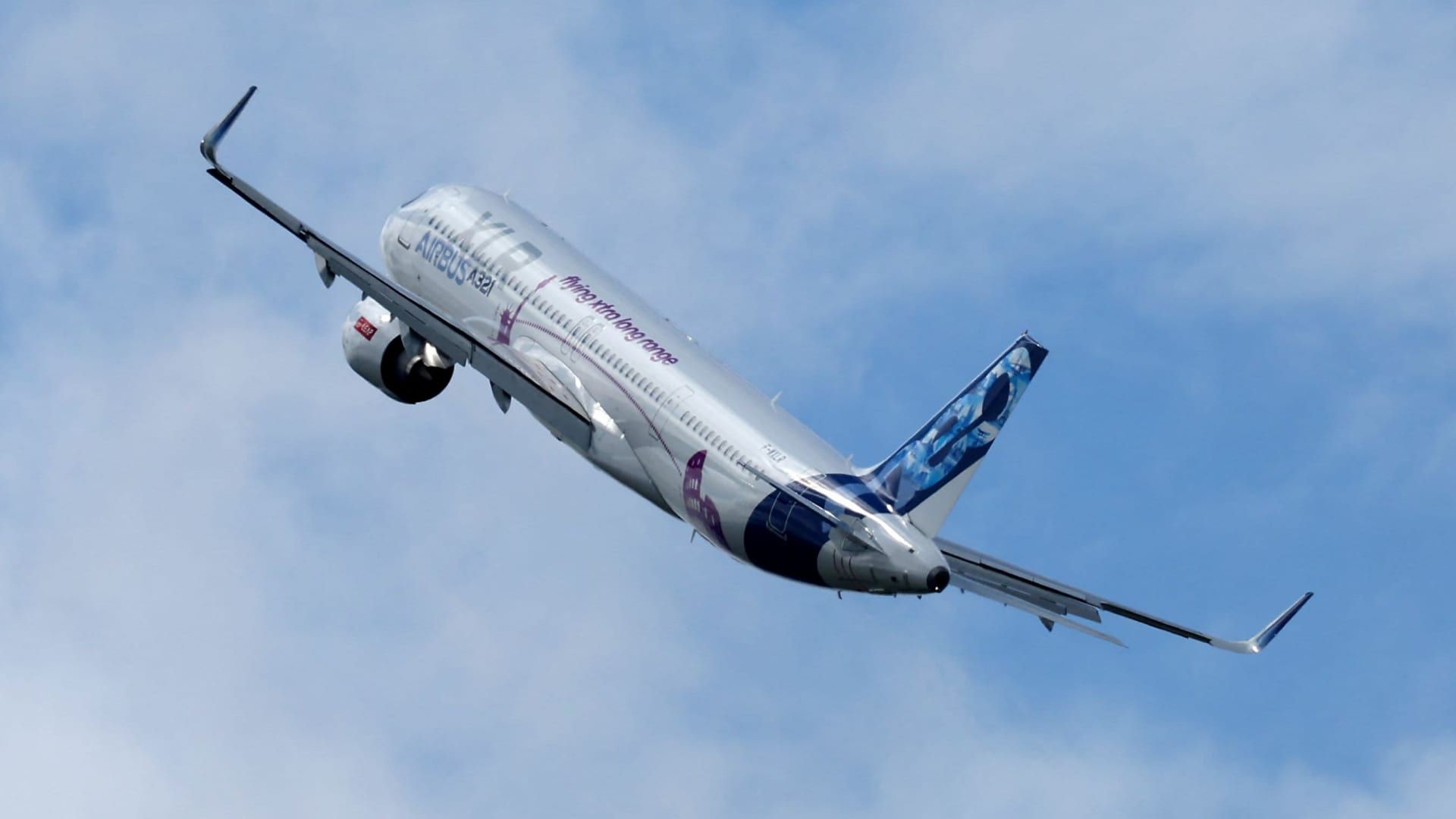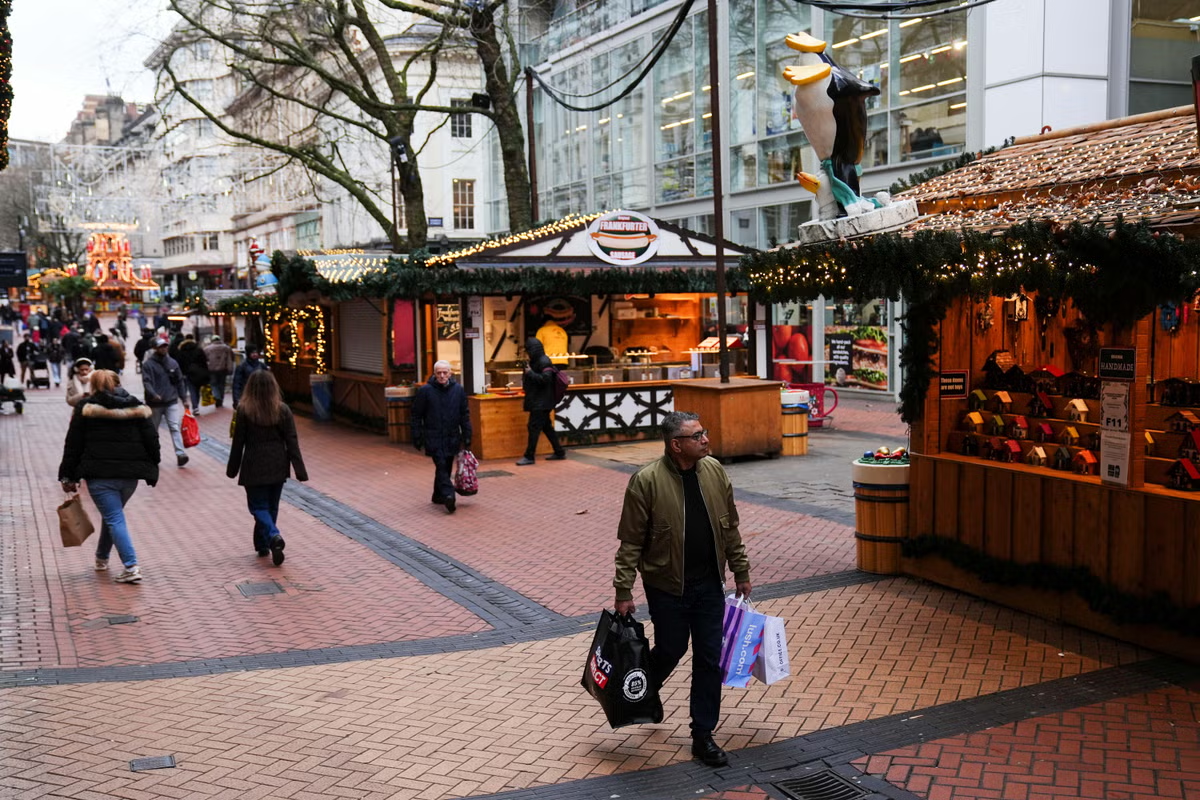An Airbus A321 flies at the Farnborough International Airshow in Farnborough, Britain, July 22, 2024.
Toby Melville | Reuters
FARNBOROUGH, England — Massive orders for aircraft, hundreds of them in recent years, were absent from this year's biggest air show. Instead, the focus was on the difficulties Boeing and Airbus to increase aircraft production as it battles the hangover from the pandemic that was marked by irregular production.
Many of the problems, particularly training new workers, will take years to fix, analysts say, meaning persistent headaches for airlines, suppliers and manufacturers themselves, and a shortage of new, more fuel-efficient planes.
“It's fair for the supplier base and the airlines to say that we're not meeting our commitments to them around timeliness and predictability,” Ihssane Mounir, Boeing's senior vice president of global supply chain and manufacturing, said during a panel at the Farnborough Air Show outside London last week. “So obviously people are starting to do their own planning and questioning.”
The production roadmap for the coming months will be revealed this week when Airbus reports its quarterly results on Tuesday, followed by Boeing on Wednesday. Wall Street analysts expect Boeing to post another loss for the second quarter and possibly the next. Airbus has cut its delivery targets for the year.
Modest Orders
At the show, which ended on Friday, Boeing had 96 orders and commitments, including previously completed sales, while Airbus had 266, well below the 826 orders at last year's Paris Air Show, according to a tally by consultancy Ishka. Paris and Farnborough alternate hosting the show each year.
One highlight was Air Korea's order for up to 50 Boeing wide-body jets, including the 777X, which Boeing is seeking to get certified by regulators. The airline also has orders for Airbus A350-1000 jets. As both manufacturers grapple with production tensions, Air Korea CEO Walter Cho joked during the signing of Boeing's order: “Whoever arrives first will become our flagship, whoever arrives on time.”
The low-key order count at the show came at a time when both manufacturers have largely sold out of their narrow-body jets, such as the Boeing 737 Max and Airbus A321neo, for much of this decade, if not longer. Boeing has a total order book of about 5,500 aircraft, while Airbus has more than 8,000 on order. Many airlines in the United States have already sold out of their narrow-body jets, including the Boeing 737 Max and Airbus A321neo. united airlines Air India has also stocked up on new aircraft orders as travel rebounded during the pandemic.
Boeing’s presence at the air show was notably modest, bringing none of its commercial jets for flight demonstrations as it focused on its safety crisis and manufacturing issues. Arlington, Virginia-based Boeing is trying to ramp up production of its flagship Max jets to about 38 a month, and investors will be looking for clues this week about when those goals might be reached.
Airbus unveiled its new extra-long-range narrow-body aircraft, the Airbus A321XLR, which was certified by European regulators days before the show began.
Parts shortage
Air show visitors typically get a glimpse of fleets that will fly for decades, but much of the industry this year was focused on production in the coming months.
Parts are also in short supply, from landing gear to engine components such as high-pressure blades to increasingly complex cabin interiors, such as those with premium seats. That has slowed production, depriving airlines of more fuel-efficient planes and angering some executives.
Ihssane Mounir, senior vice president of commercial sales and marketing at The Boeing Company, with Peter Anderson, chief commercial officer at AerCap, attend a press conference at the Farnborough International Airshow in Farnborough, Britain, July 19, 2022.
Matthew Childs | Reuters
Airbus is taking a more hands-on approach “than ever before,” deploying more than 200 supply chain engineers across suppliers, said Christian Scherer, chief executive of the European manufacturer's commercial aircraft business.
“What we don't want to see again in the future, whether we're in a boom or a downturn in this industry, is a situation where the supply chain doesn't believe what we tell them,” Scherer told reporters ahead of the event.
Airbus said last month it would cut its aircraft delivery target for the year and slow planned production ramp-up, citing “specific persistent supply chain issues, mainly in engines, aerostructures and cabin equipment.”
Meanwhile, Boeing, in addition to supply chain problems, is trying to emerge from a safety crisis stemming from a door stopper bursting in January and a series of manufacturing defects that have slowed production.
New workers and low wages in the spotlight
The loss of skilled workers who were laid off or opted to retire early during the COVID-19-induced air travel slump has hampered the production of new aircraft. Manufacturers now have to train new workers, which is a major challenge.
“I think it's a problem that will be solved in three to five years,” said Kevin Michaels of AeroDynamic Advisory, an industry consulting firm. “Wages need to be adjusted to make the industry more attractive” to workers.
Boeing's Mounir acknowledged that lower wages are a problem further down the supply chain and said Boeing itself should invest in training.
“There's no doubt about it,” he said. “I don't expect these smaller providers, who are essential to the ecosystem, to be able to take on that burden. We have to do it ourselves at a higher level, again, leveraging our balance sheet. It will pay off.”
It takes more time to train workers like “bakers, butchers, people who work in a very different business area” who are new to the aerospace field, said Delphine Bazaud, head of Airbus's industrial supply chain and digital operations.
AeroDynamic Advisory's Michaels predicted that in the U.S., more aerospace work will eventually move overseas, “to places where labor is available.”







